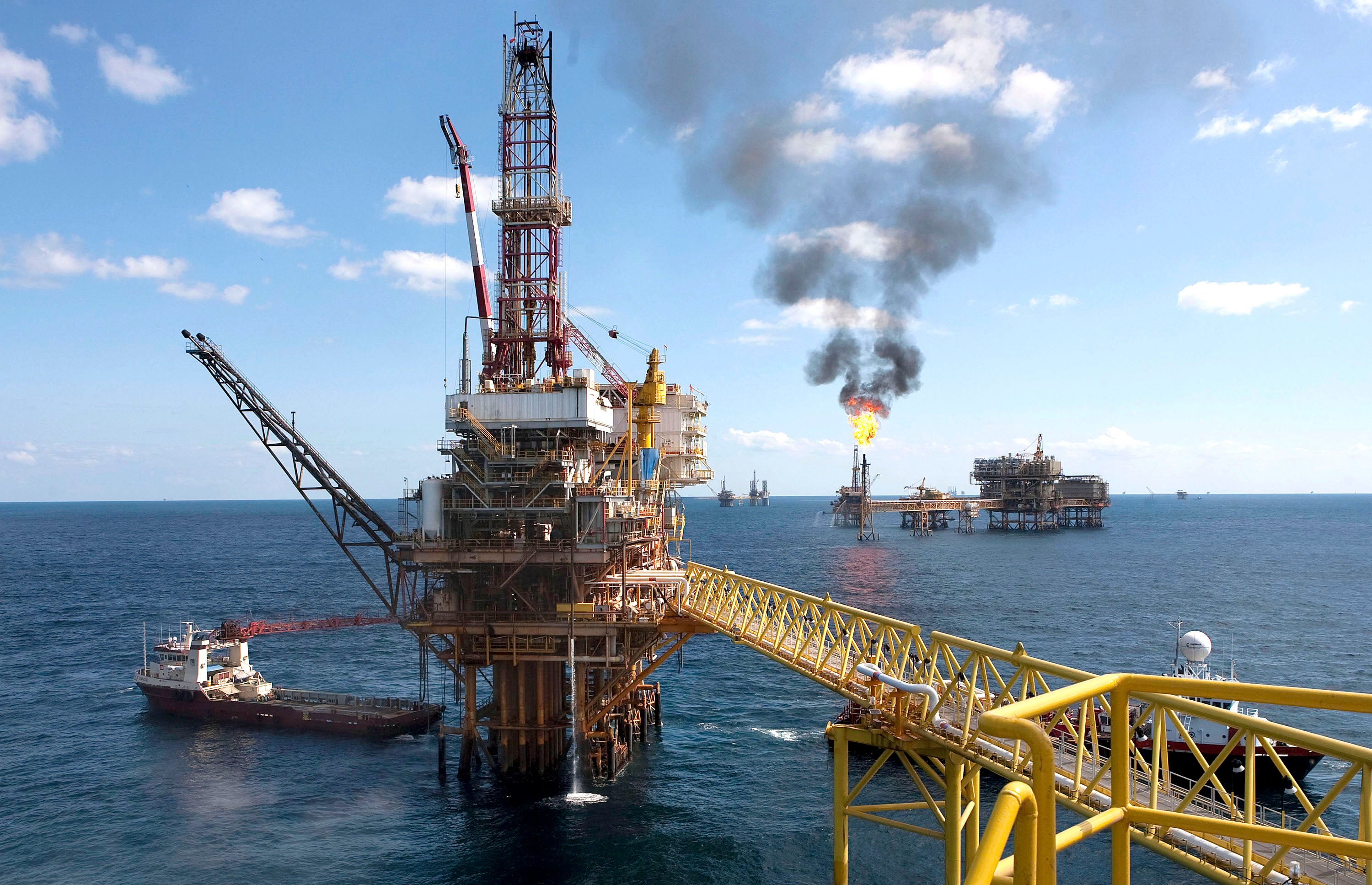
CLIMATEWIRE | Oil and gas operations in the Gulf of Mexico emit more methane than estimated in government inventories, according to researchers from the University of Michigan.
Their study, published this week in the Proceedings of the National Academy of Sciences, is one of the first to focus primarily on offshore oil and gas emissions, comparing flyover observations to the data industry reports to the federal government. Researchers found higher methane emissions from shallow water platforms, especially those that serve as central hubs to gather and process oil and gas in the Gulf.
“This illustrates how critical it is to make direct measurements,” said Eric Kort, a report co-author and University of Michigan associate professor of climate and space sciences and engineering. “We would have had no idea what the climate impacts would be from the Gulf and an accurate sense without these measurements.”
Researchers found that the carbon intensity of the Gulf’s oil and gas production could be as much as twice as government estimates. That calculation included major on-site greenhouse gas emissions, carbon dioxide from combustion and methane losses through venting.
While carbon dioxide emissions were pretty close to inventory data, the study found that methane emissions from shallow water central hubs were higher than reported and accounted for half of greenhouse gas emissions from federal offshore oil and gas production in the Gulf. Cold venting — where unlit methane is released into the atmosphere — and older facilities closer to shore are the primary culprits of the undercounting, researchers said.
“Methane is the majority of the greenhouse gas footprint in the basin,” said Alan Gorchov Negron, the report’s lead author and a doctoral candidate at the University of Michigan. “When you look at the literature, people looking at [the] carbon density of other fossil fuel basins, methane isn’t always the biggest part of the budget.”
The carbon intensity of offshore oil and gas operations in shallow state waters was nearly the same as the carbon intensity of a consumer burning natural gas for energy, according to Gorchov Negron.
Gorchov Negron said there are 160 central hubs in federal shallow waters and 93 in shallow state waters. The analysis did not include emissions from more than 1,700 shallow water “satellite” facilities, some Texas shallow water facilities that don’t follow central hub designs and pipeline leaks. While researchers say these emissions “could be important,” they are assessed to be small in comparison to the central hubs.
Such hub facilities tend to be older, which may be the cause of some of the cold venting, the researchers said. The study suggests updating infrastructure and replacing venting practices with “efficient” flaring, which burns the natural gas.
Brenda Ekwurzel, the director of climate science for the nonprofit Union of Concerned Scientists, called the reported undercounting of methane emissions “disturbing.” But the study also provides a blueprint for addressing the problem, she said.
“What’s encouraging is to identify the type of facilities that tend to have this pattern of having higher emissions than there’s typically reported,” Ekwurzel said in an interview. “It means that you can improve and reduce those emissions because they seem to be with certain facilities that are doing certain activities.”
Erik Milito, president of the National Ocean Industries Association, said oil production in the Gulf is less carbon intensive than the global average. Most production — 92 percent — comes from deep-water federal facilities, he said, and operators follow strict regulations on flaring and venting.
But he also highlighted the study’s data on emissions from central hub facilities.
“What we do have here is additional data that’s important, when you’re looking at what they’re finding for some of these central hub facilities. [We] always wants to make sure that we’re taking steps to reduce emissions are feasible,” Milito said. “And that’s going to be important data.”
The researchers said they hope EPA and the Bureau of Ocean Energy Management adopt their measurements when making future decisions on oil and gas leases and production.
Chris Eaton, a senior attorney for EarthJustice’s Oceans program, said the study has potential implications for the Biden administration’s five-year offshore oil drilling plan, which it plans to release in December (Greenwire, March 8).
If the administration is basing their plan on inaccurate measurements of methane emissions, they could inaccurately assess the climate impact of further drilling in the Gulf of Mexico, he said.
“We shouldn’t be doing more leasing,” Eaton said. “That’s just going to create more of a methane problem when they haven’t gotten this one under control.”
This story also appears in Energywire.
Reprinted from E&E News with permission from POLITICO, LLC. Copyright 2023. E&E News provides essential news for energy and environment professionals.



